Welcome to Oslo! In this week’s blog, I will share with you the best itinerary for spending 2 days in Oslo, the vibrant and modern capital of Norway.
Oslo is the perfect destination for a weekend city trip. It is also the perfect place to start or end a road trip through this beautiful nordic country. In our case, it was our last stop of our trip after spending 12 amazing days in the Lofoten Islands.
Is Oslo in your next vacation plans? Then keep reading to find out all the spots not to miss!
TABLE OF CONTENTS
OSLO
With a population of approximately 1 million people, Oslo is not only the capital but the biggest city in Norway. However, here are some interesting facts about this city that you might not know:
- Oslo consists of mostly forests. Despite being the biggest city in the country, most of its territory is covered by forests.
- The city used to be called Christiania. This name originated after the city of Oslo was mostly destroyed after a fire in 1624. King Christian IV of Denmark and Norway decided to reconstruct the city next to the bay and Akershus Castle. The new urban center was called Christiania in honor of its benefactor while the old parts of the city became know as Gamlebyen (“The Old Town”). In 1925, Oslo’s original name was reinstalled as the Norwegian people wanted to distance themselves from its historical union with Denmark.
- The Nobel Peace Price is awarded in Oslo and not in Stockholm as the other Nobel Prices.
- Oslo is popularly known as “Tiger City”. But don’t worry, there are no Tigers near Oslo. The origin for this name comes for the 1870 poem “Sidste Sang” in which the Norwegian poet Bjornson described the city as fight between a horse and tiger. The tiger represented the dangerous side of the city and the horse as the safe side.
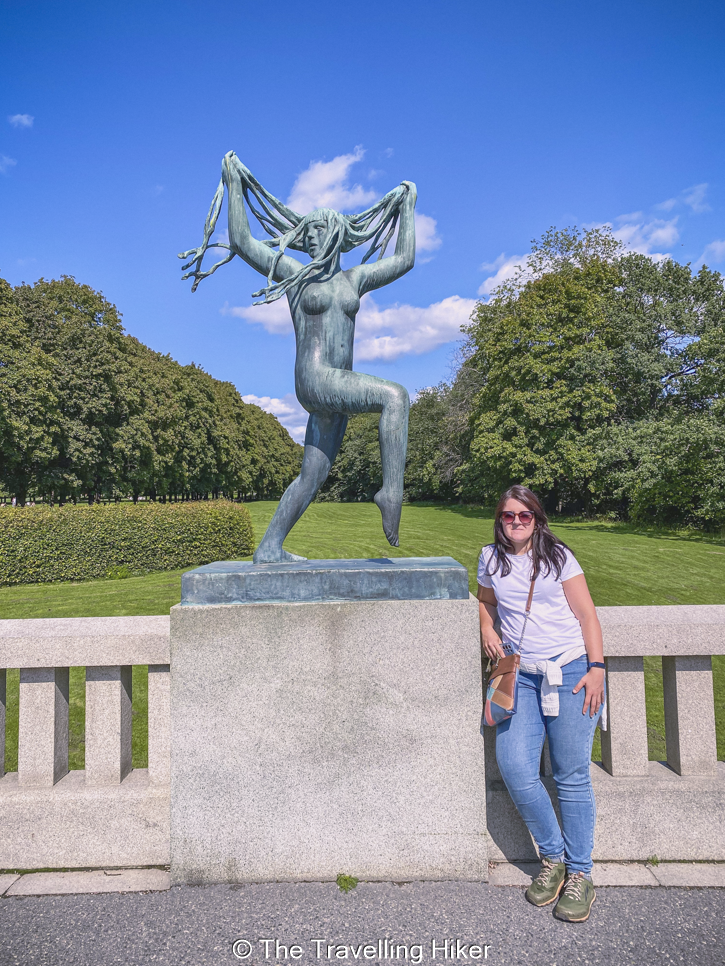
CAN YOU VISIT OSLO IN TWO DAYS?
The answer to this question is both yes and no. Spending 2 days in Oslo will allow you to visit the most important sites of the city without having to rush but you will not be able to see everything.
If you want to visit Oslo more in depth, I would recommend staying here 3 to 4 days. Oslo has a lot of interesting museums to visit and, if you have the time, you can also go on a day cruise to a nearby fjord.
OSLO PASS
The Oslo Pass is a card that will grant you special prices and faster access to the different sites to visit in Oslo. You can get an Oslo Pass with 3 different durations: 24h, 48h and 72h.
Which should you get? Well, this will depend on how many days you’re visiting Oslo and what places do you intend to visit.It will be a matter of getting your calculator and checking the prices of the sites you plan on visiting. If the Oslo Pass is more or less the same, I recommend you get since it also includes unlimited rides on public transport (rides to the Airport not included).
To get additional information about the sites that are included and prices, check the official Visit Oslo website.
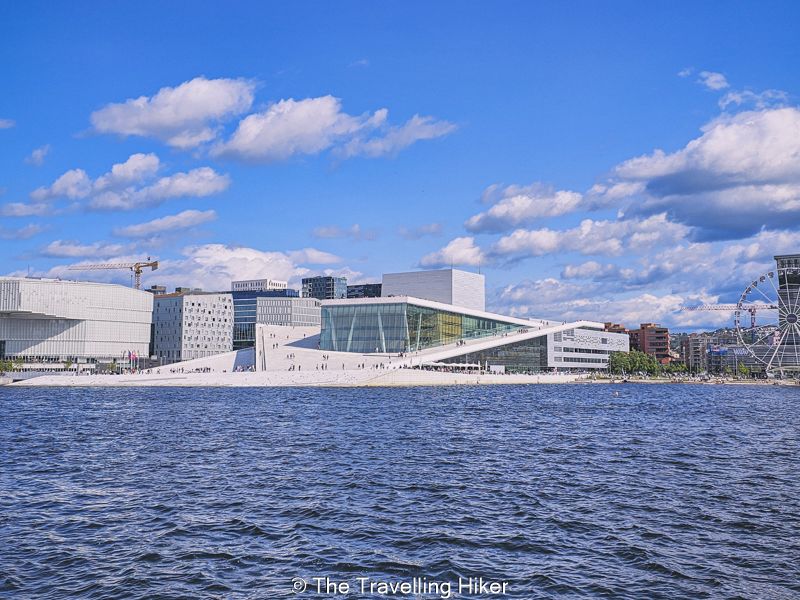
2 DAYS IN OSLO - THE BEST ITINERARY
Before I start with my 2 day itinerary to visit Oslo, I would like to clarify a few things:
- This itinerary shows everything I did during the 2 full days I spent in this city based on my interests. However, there are many other places to visit or include in your itinerary. After the itinerary, I will include a section with additional things to do in the city in case you have extra time.
- Some places I will include in this itinerary are far from each other. I recommend using public transport to move around the city.
- At the end of this blog, I have compiled a map with all the places that I will mention so that it is easy for you to locate them.
OSLO - DAY 1
On our first day in Oslo, we started our visit to the city with BygdØy peninsula, which hosts several very interesting museums. Unfortunately, we only had time to choose one of them but if you’re staying in Oslo for a longer period I would definitely visit one or two more.
Norsk Folkemuseum (The Norwegian Museum of Cultural History)
The Norsk Folkemuseum is an open-air museum that shows how people lived in Norway from 1500 to the present. The museum has many collections and 160 buildings that represent different regions in Norway as well as different periods in time. Its most popular building is the Gol Stave Church which dates of the year 1200.
We spent the morning exploring this museum and the different buildings to get a good understanding on how people lived in Norway.
Practical information:
- The museum and BygdØy peninsula can be reached either by bus or with a small ferry from Oslo.
- Opening hours vary depending on the time of the year. From October to April, the museum is open between 11:00 and 18:00 (last entry at 16:00) and from May to September the museum is open between 10:00 and 20:00 (last entry at 17:00).
- The ticket price also changes depending on the time of the year. You’ll find the latest updated prices at Norsk Folkemuseum official website.
- The Norsk Folkemuseum is included in Oslo Pass.
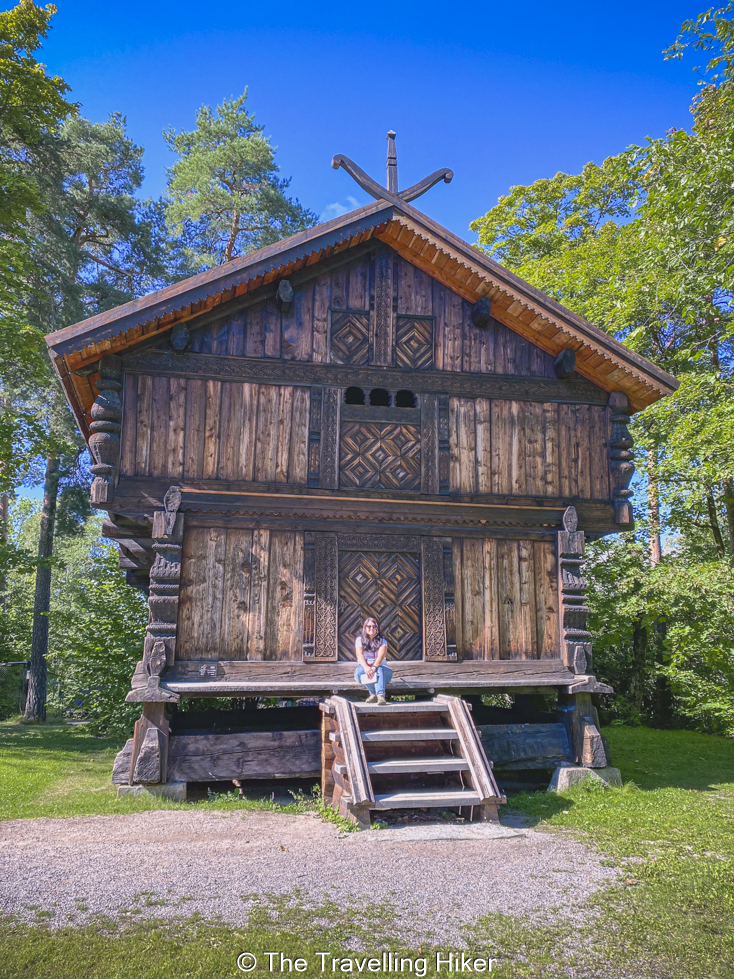
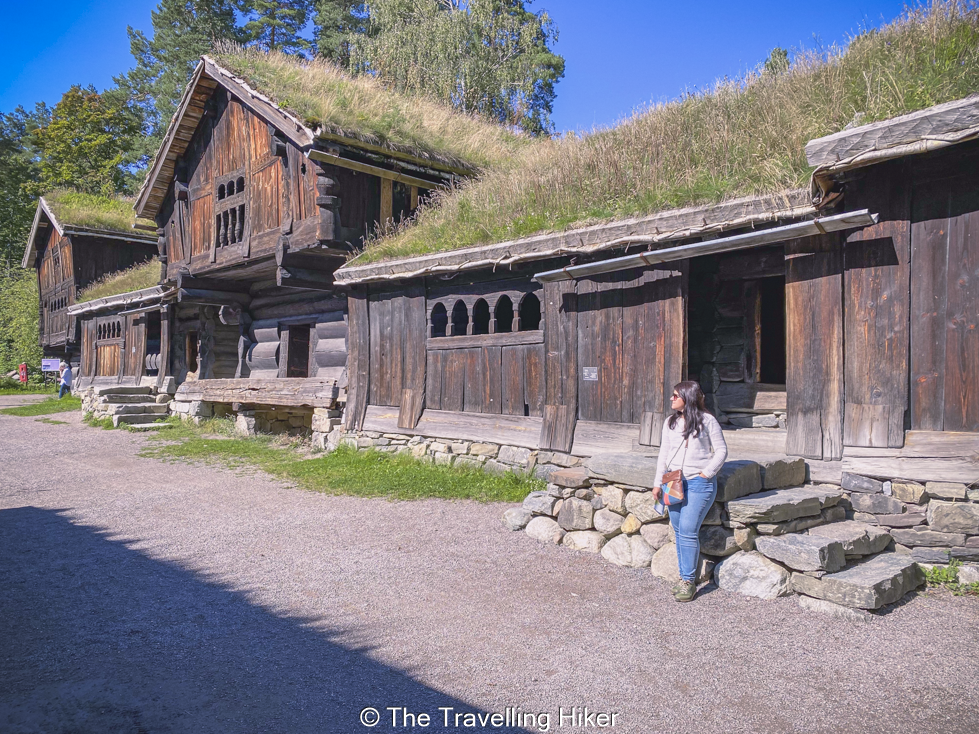
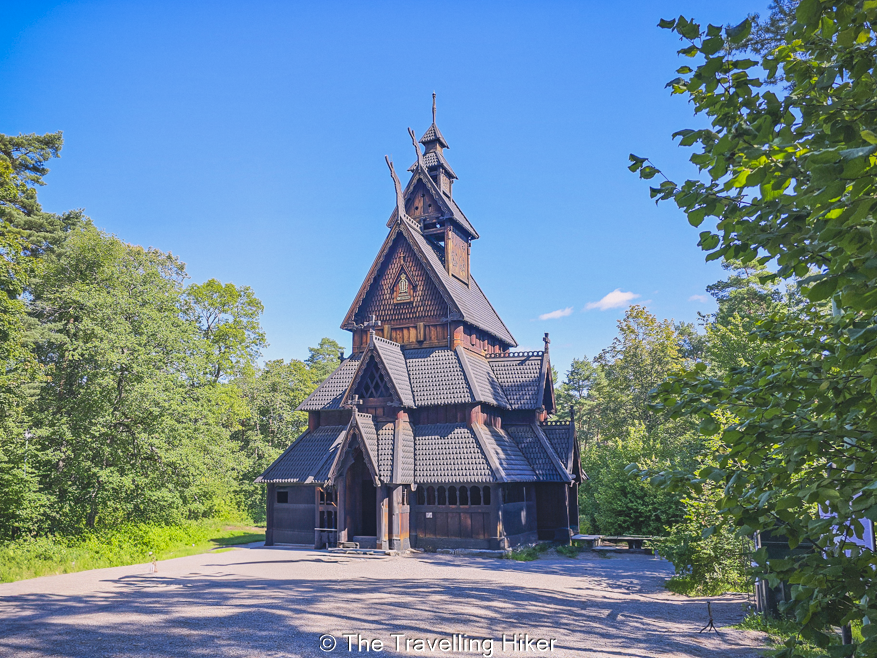
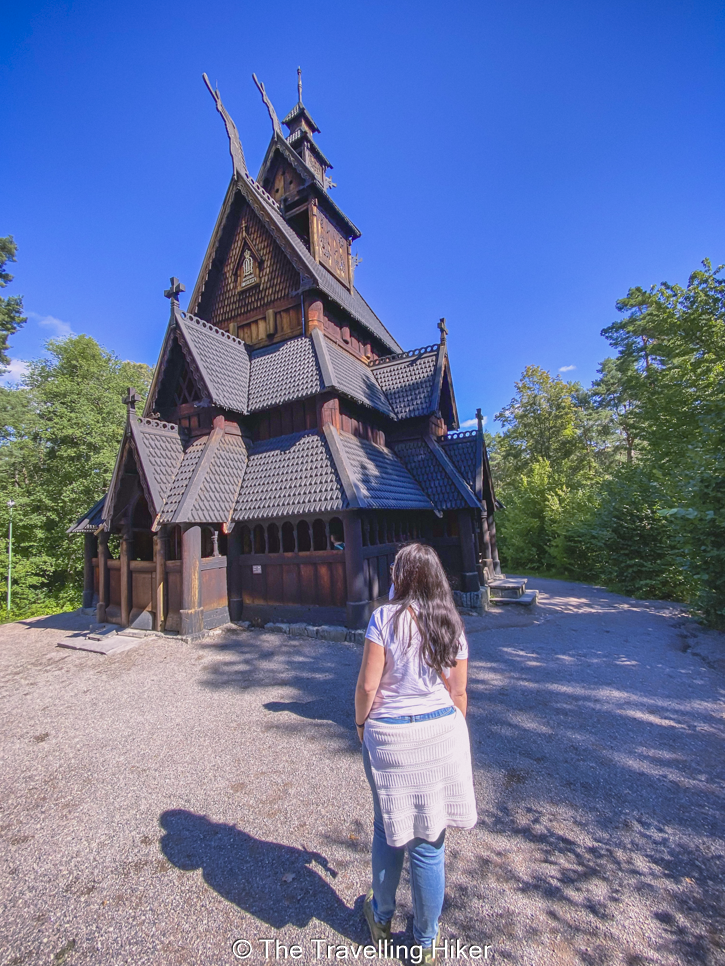
Vigeland Park
Once we had seen the museum, we hopped on another bus to Vigeland Park. This park is in fact, a small part of Frogner Park, the biggest park in Oslo. It is a park with over 200 sculptures in bronze, granite and cast iron from the Norwegian artist Gustav Vigeland.
The most famous sculptures in the park are the Monolith and The Angry Boy, who it is said to give good luck if you touch his fist.
Vigeland Park was one of my favorite parts in Oslo. It was a very nice sunny day in Oslo so we spent quite a lot of time exploring all the different sculptures. My favorite statue of the park the Woman Holding Her Hair, but all of them were interesting to look at.
Practical information:
- The parking is open the whole year round and it is free to visit.
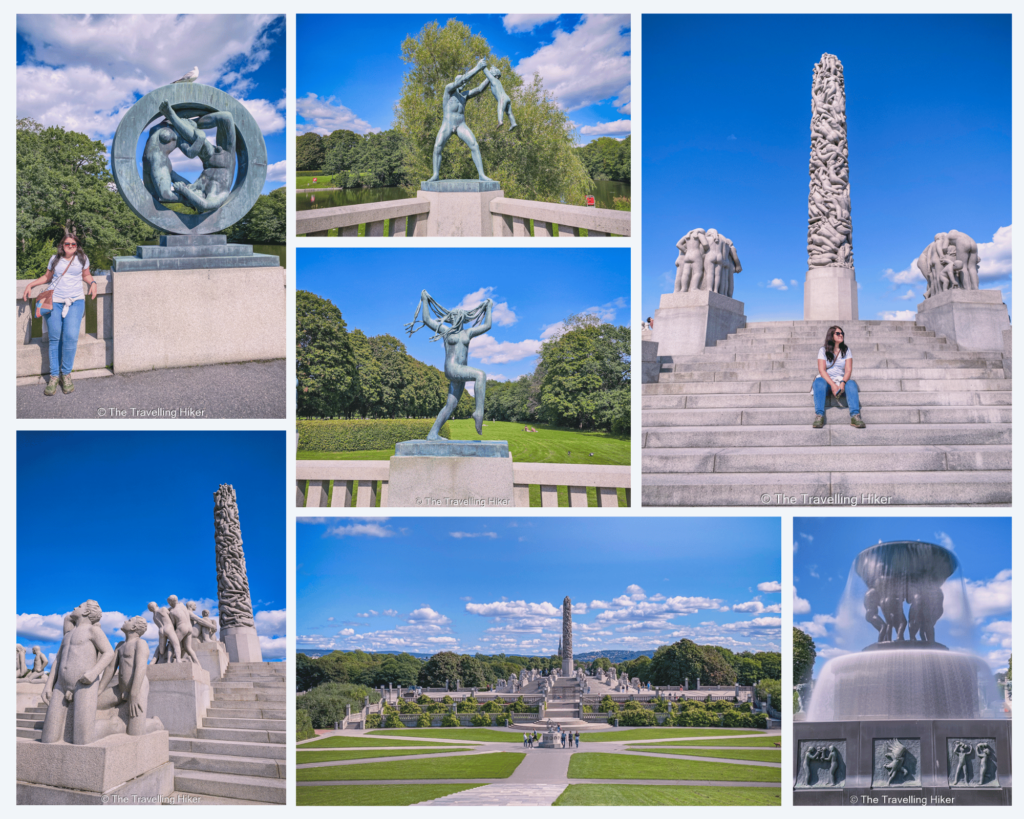
The Royal Palace
Our next stop after Vigeland Park, was the Norwegian Royal Palace, which is the official residence of the Norwegian Royal Family. We just visited the outside of the palace and its gardens since we didn’t have a lot of time but if you’re interested, it is possible to join a guided tour of the most important areas between June and August. You can find more information about it at the Royal Palace Official Website.
Another thing you can do is watch the changing of the palace guard that takes place daily at 13:30 in front of the palace.
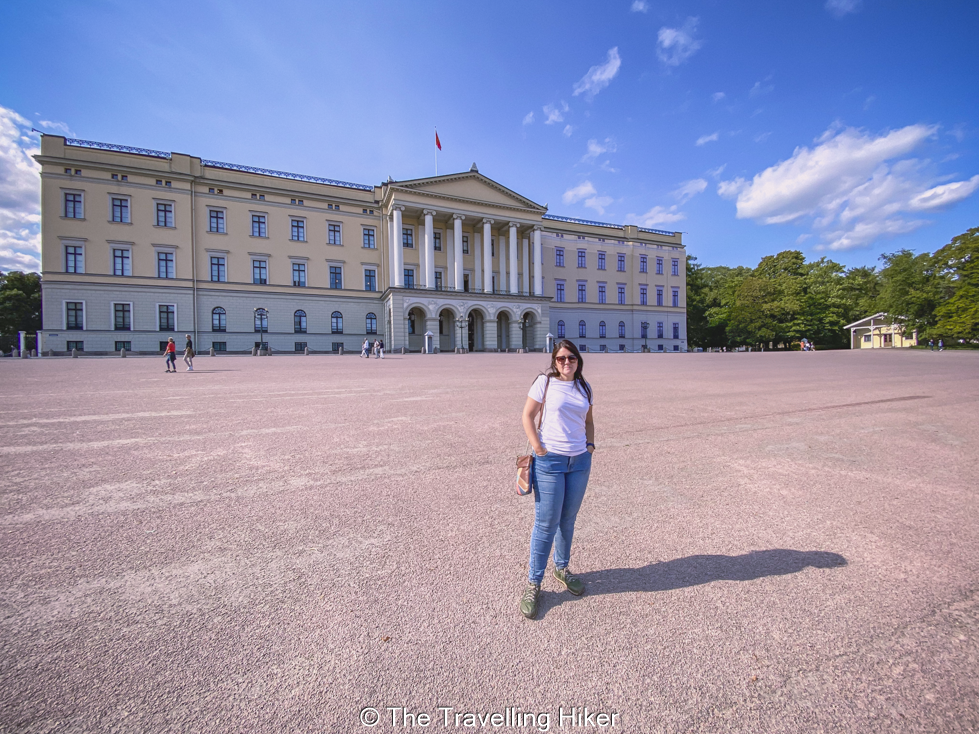
The National Theater
After the palace, we walked to the National Theater which was designed by architect Henrik Bull. On the outside of the building there were statutes of famous Norwegian writers like Henrik Ibsen and BjØrnstjerne BjØrnson.
Again we only admired the building from the outside, but it is also possible to join guided tours in English during the summer months.
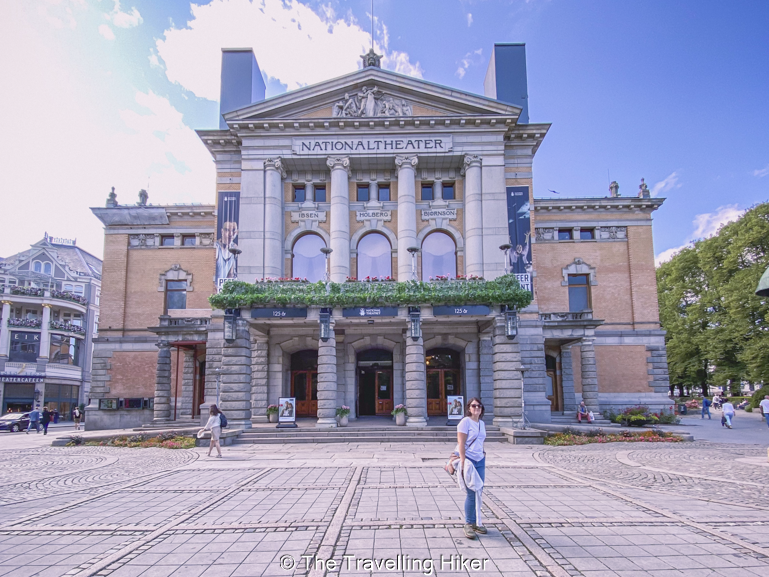
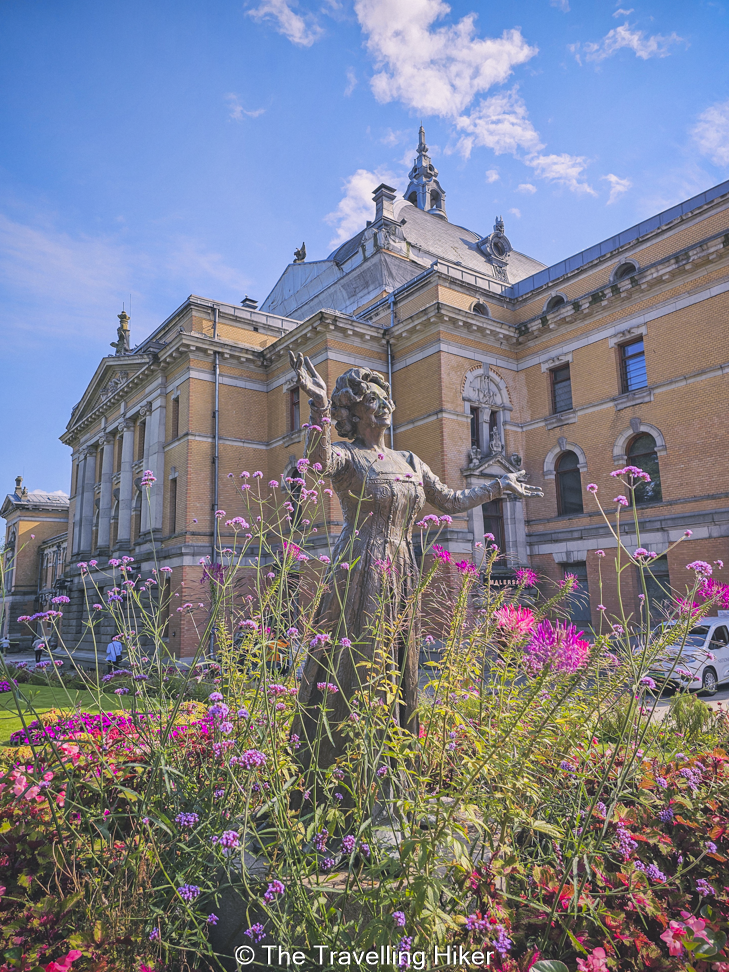
The Norwegian Parliament or The Storting
A bit further, we found the Norwegian Parliament building (The Stortinget). It is not possible to visit inside the parliament building but it is still worth it stopping by to admire it from the outside.
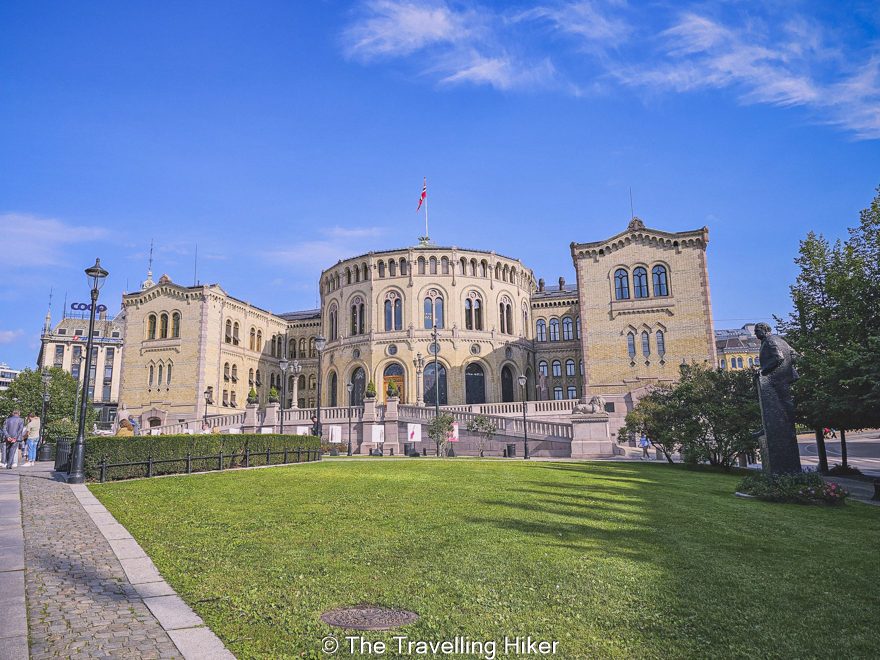
Karl Johans Gt Shopping Street
Next to the Parliament, you can find Karl Johans Gt which is Oslo’s main shopping street. It is a completely car free street that connect the Royal Palace and Oslo’s Central Station. In the nearby streets, you’ll also find lots of souvenirs shops.
We just walked around and looked at the different shops since we didn’t need to buy anything but if you feel like doing some shopping, this is the place to be.
Oslo's Cathedral
Our last stop of the day was Oslo’s Cathedral which is a Lutheran church. It is used by the Norwegian Royal Family for weddings and funerals.
Practical information:
- Entrance to the cathedral is free.
- The cathedral is open daily. Between Saturday and Thursday, it is open from 10 ame to 4 pm. On Friday’s, the opening hours are between 4 pm and midnight.
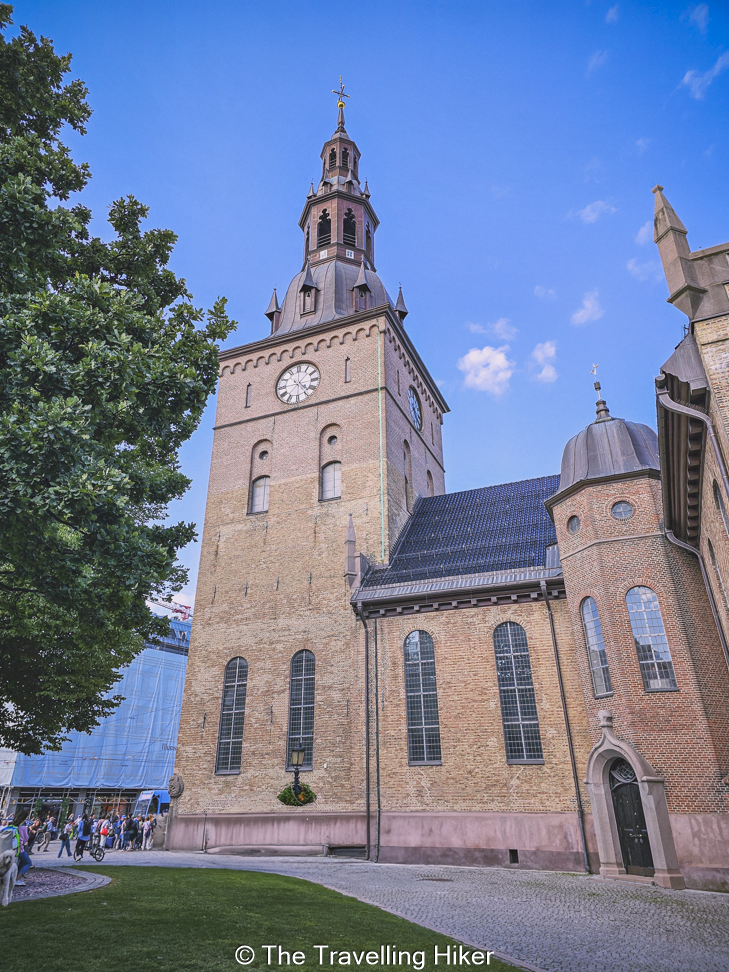
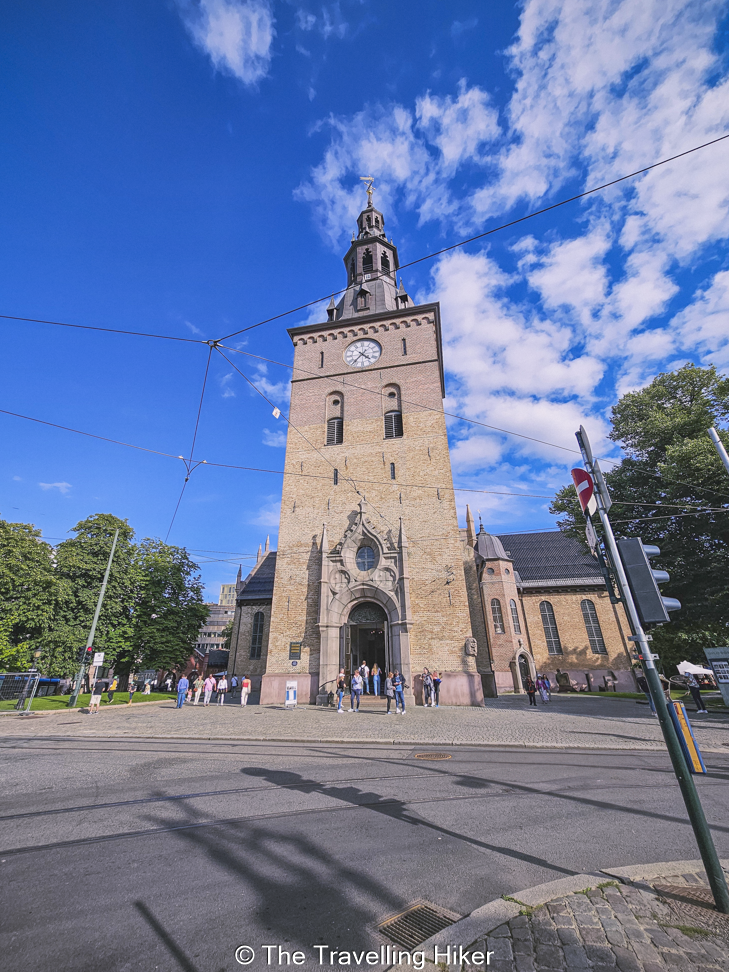
OSLO - DAY 2
Our second day in Oslo, was spent most of it in museums since we wanted to visit two of them.
The National Museum
We began our day by visiting the National Museum, which was only open in 2022. It hosts Norway’s largests art collection with over 5.000 pieces which include art, design and architecture.
They also have a specific room dedicated to Edvar Munch in which you can find some of the artist most famous paintings, including an oil canvas of its most famous painting ” The Scream”.
Practical information:
- The museum is open Tuesday to Sunday. On Thursday, Friday, Saturday and Sunday between 10:00 and 17:00. On Tuesdays and Wednesdays between 10:00 and 20:00.
- The ticket price was 200 NOK per person in 2024. Always check the National Museum official website to have the latest updated information.
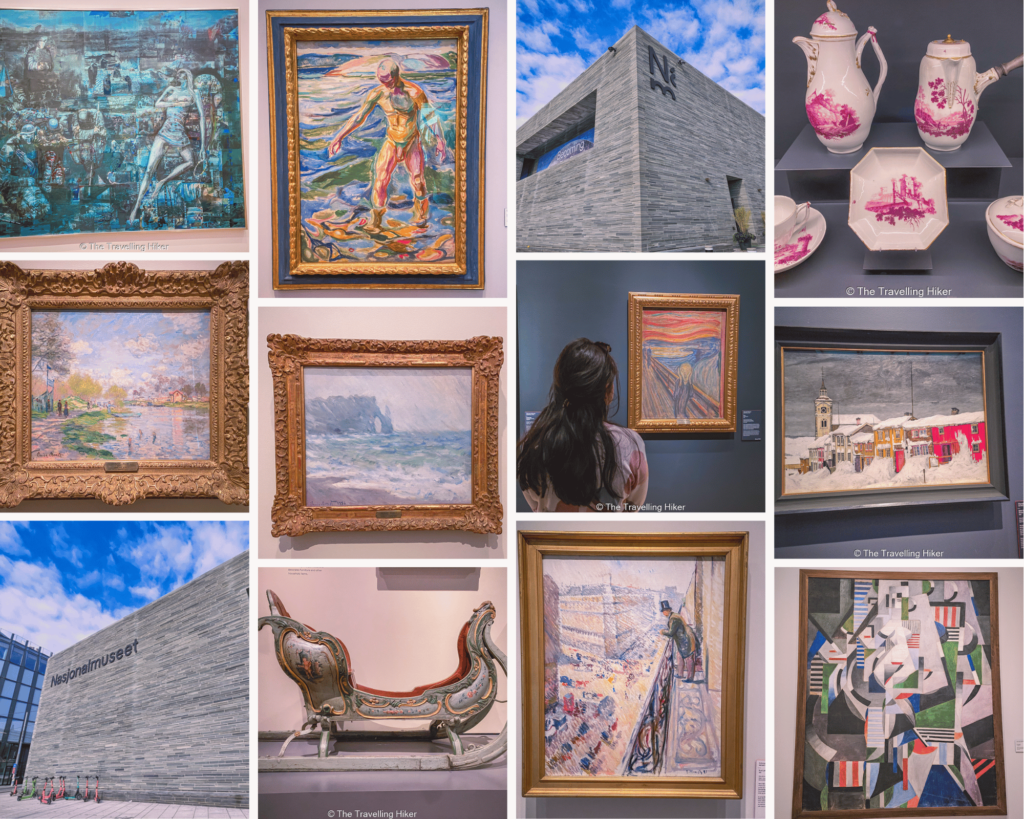
The Nobel Peace Center
Right next to the National Museum you find the Nobel Peace Center, who has a permanent exhibition with all the Nobel Peace Price winners as well as lots of information about Alfred Nobel and its life.
Practical information:
- The Nobel Peace Center is open daily from 11:00 to 18:00 between the months of June and September. The rest of the year is open daily from 11:00 to 17:00 except on Mondays, when the museum is closed and on Wednesdays, when the museum is open until 20:00.
- The price of the entry ticket was 160 NOK in 2024. You can check the latest updated information in the Nobel Peace Center website and you can also buy your tickets there.
- Entrance to the Nobel Peace Center is included in the Oslo Pass.
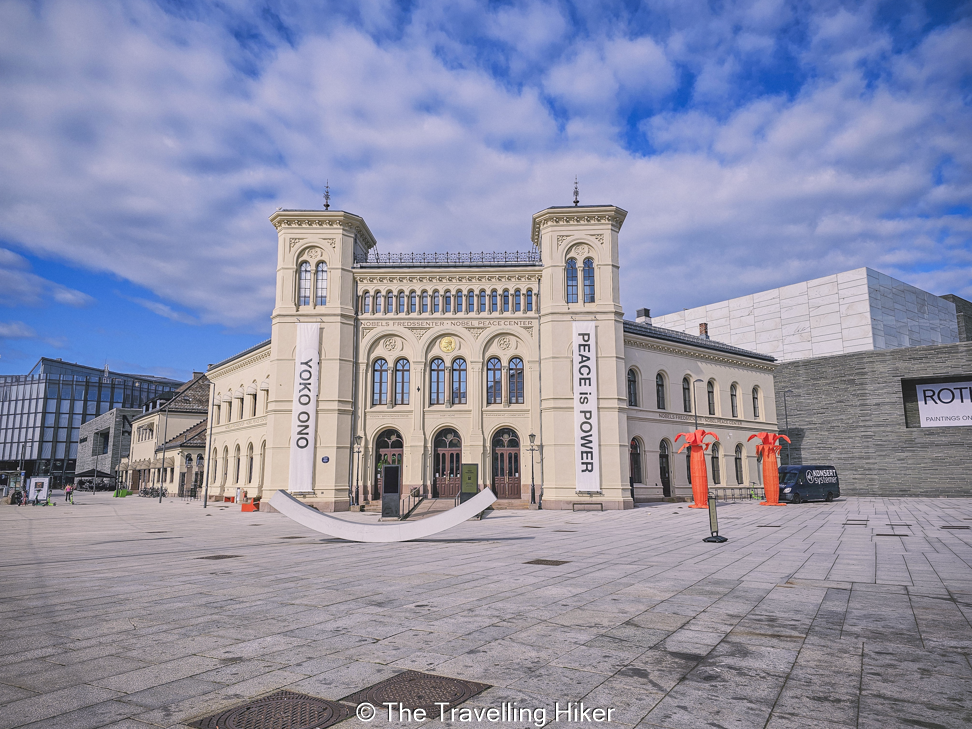
Oslo City Hall
Our next stop was the Oslo City Hall, where every year the Nobel Peace Price is awarded. Unfortunately, the building façade was being renovated but the interior of this building is breathtaking. The walls are covered in murals by some of the most famous Norwegian painters. I was very pleasantly surprised by this building and I consider it an absolute must in Oslo.
Practical information:
- Entrance to the City Hall is completely free.
- The City Hall is open daily between 9:00 and 16:00.
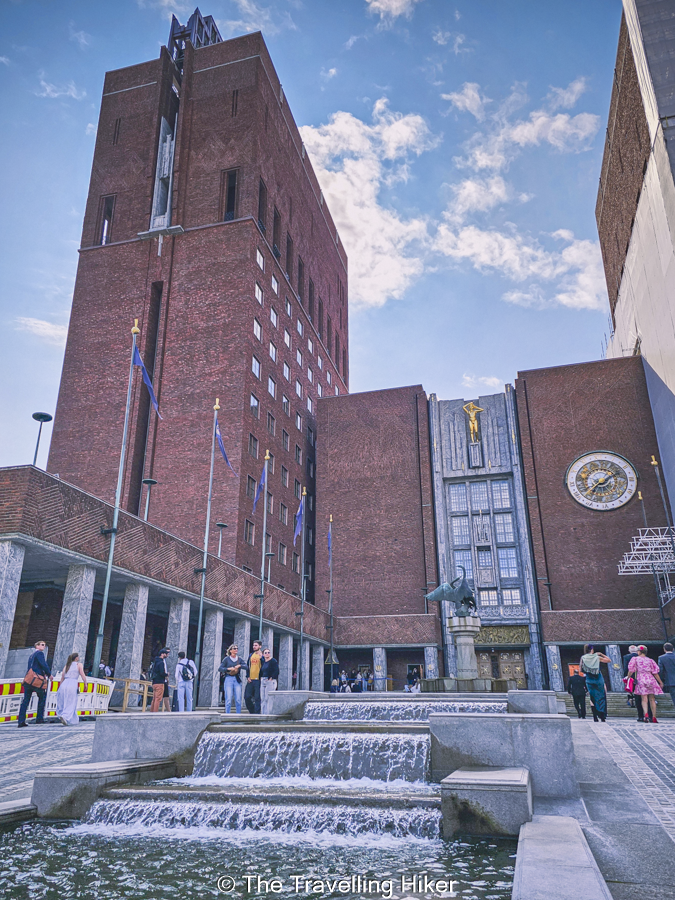
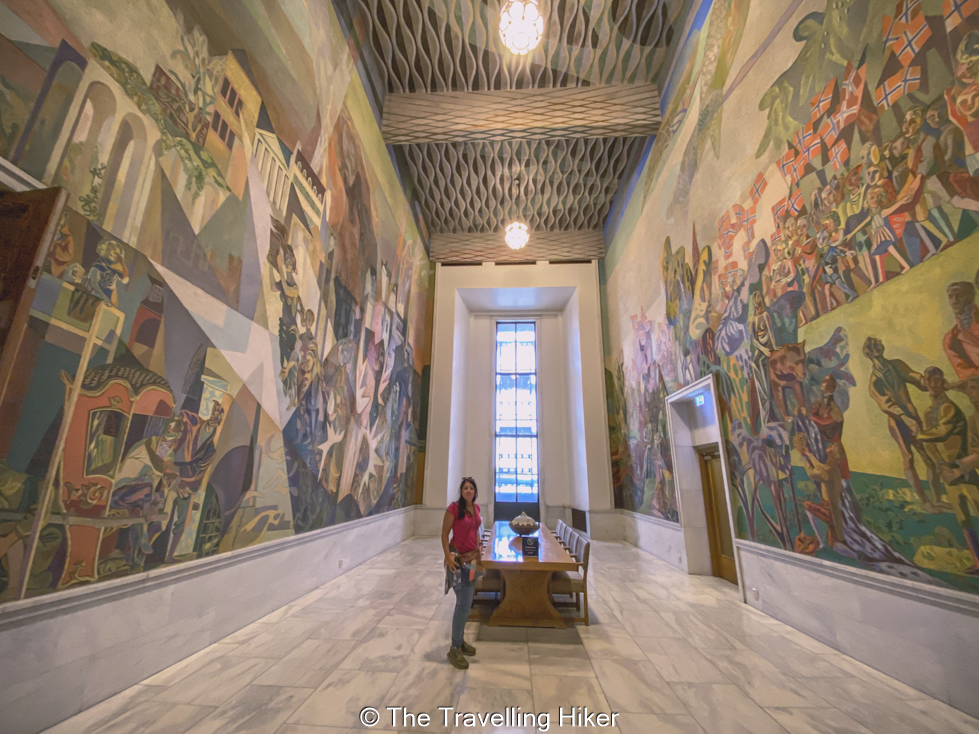
Akershus Fortress
Akershus Fortress is a medieval castle overlooking Oslo’s bay and dating from the year 1300. It used to be the royal residence in Oslo but these days, it just acts as a museum where you can visit the banquet halls and main rooms.
From Akershus Fortress, you’ll also get some nice views of Oslo and the fjords.
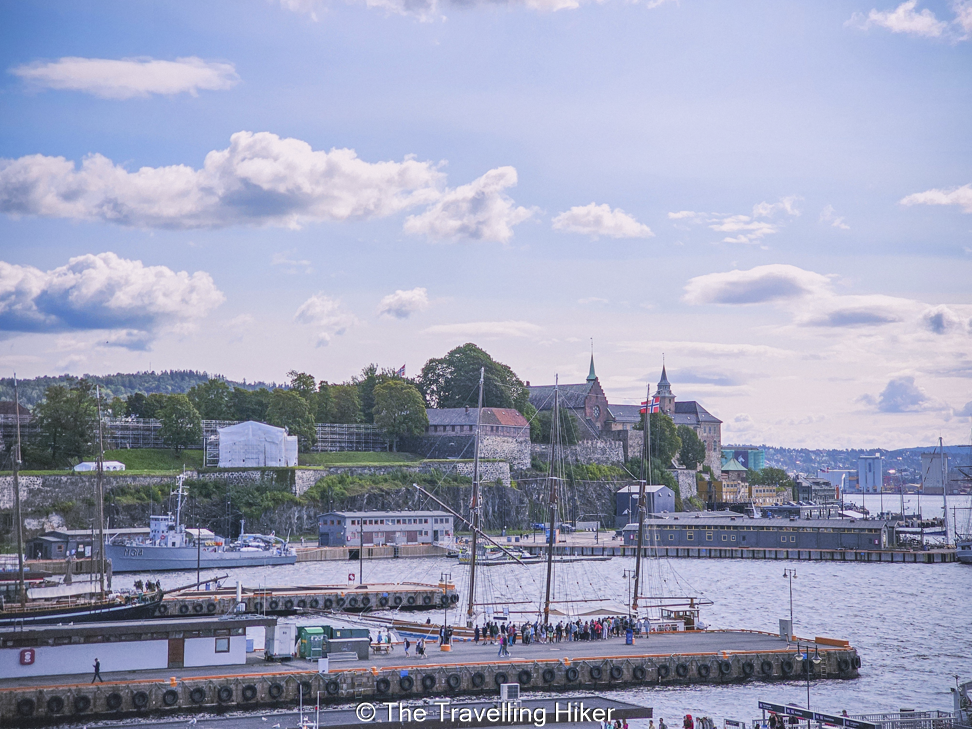
Oslo Opera
Our next stop was Oslo’s most iconic and award winning building, the Oslo Opera. Designed by the Norwegian architecture firm Snohetta, it has created to invite the visitors to climb its roof and enjoy beautiful panoramic views of Oslo and the surrounding fjords.
The Oslo Opera House is the home to the Norwegian National Ballet and the Opera Orchestra so if you’re looking for a more special activity, this is the place just for you. You can check what performances will be on show during your stay at Oslo and book your tickets in advance at its official website.
In our case, we only visited the building from the outside and relaxed on its rooftop to enjoy the good weather and views of the city but if you have the time, it is also possible to join a guided tour of the Opera.
Practical information:
- It is possible to visit the Opera daily by joining a guided tour in English, German and Norwegian. There is 1 tour per day in each language. Although during high season there are two English tours per day.
- The tour last approximately 50 minutes.
- Price of the tour is 150 NOK in 2024. To check latest updated information about prices alwasy check the official website. Here you can also book your spot for the tours in advance.
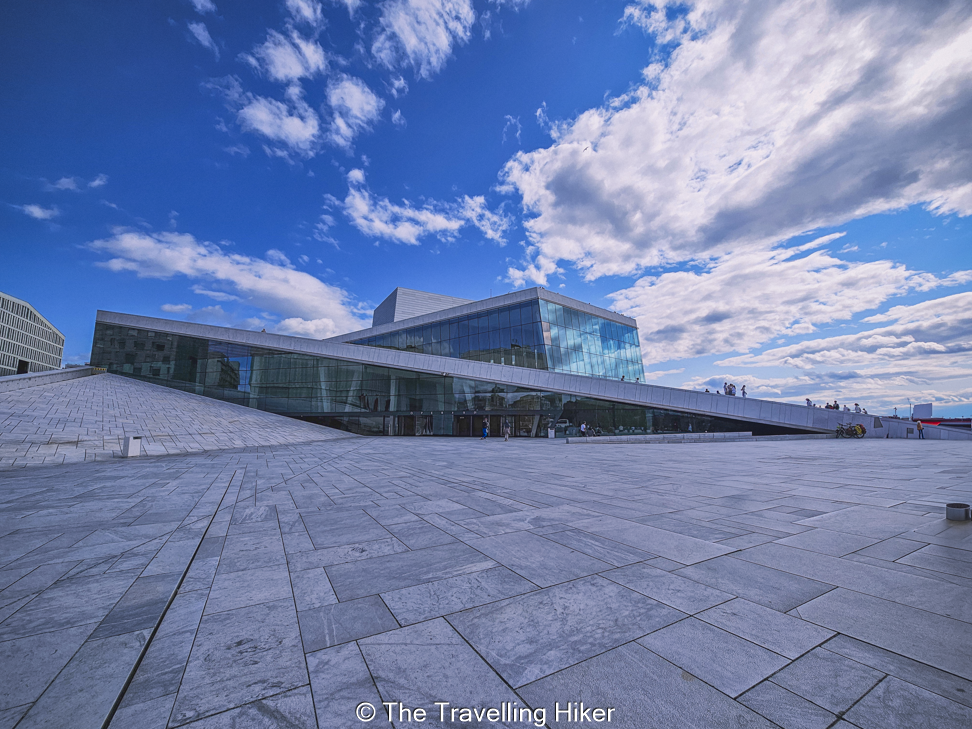
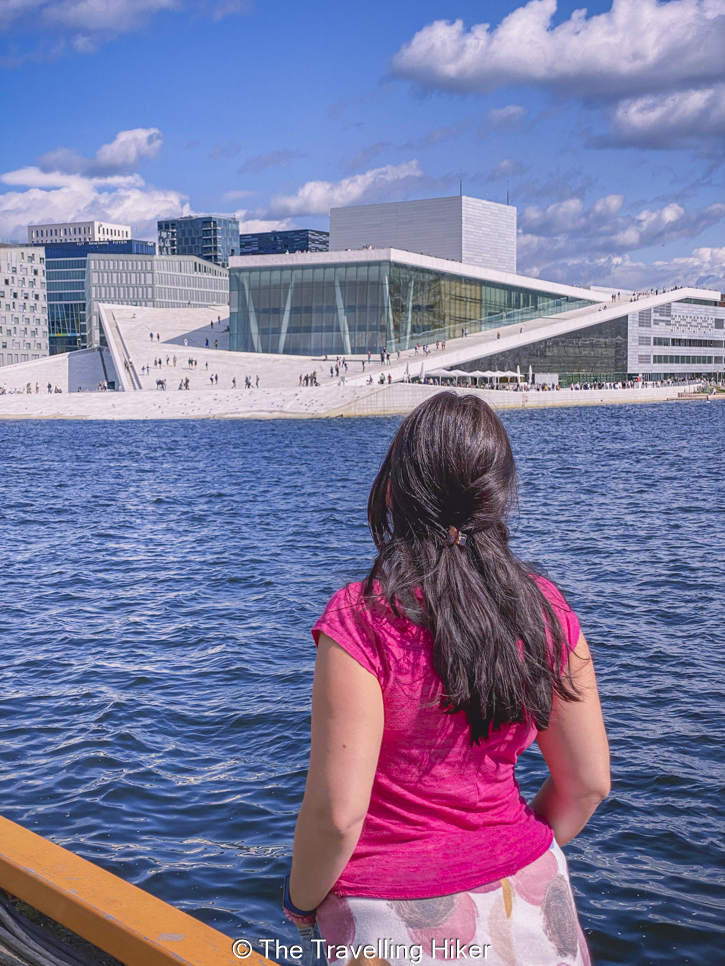
Munch Museum
Next to the Opera House, you will find the Munch Museum which opened in 2021. It is a 13-floor building that hosts the biggest collection of Edvard Munch’s paintings, including 3 litographs of his most famous piece The Scream.
To make your visit to this museum even more special, you can have dinner at the restaurant located on the 13th floor with amazing views over the city.
Practical information:
- The museum is open daily: Sunday to Tuesday between 10:00 and 18:00 and Wednesday to Saturday between 10:00 and 21:00.
- Entry price to the museum in 2024 is 180 NOK (online tickets) and 200 NOK (at the museum). Always check Munch Museum’s official website for latest updated information.
- Entrance to the museum is included in the Oslo Pass.
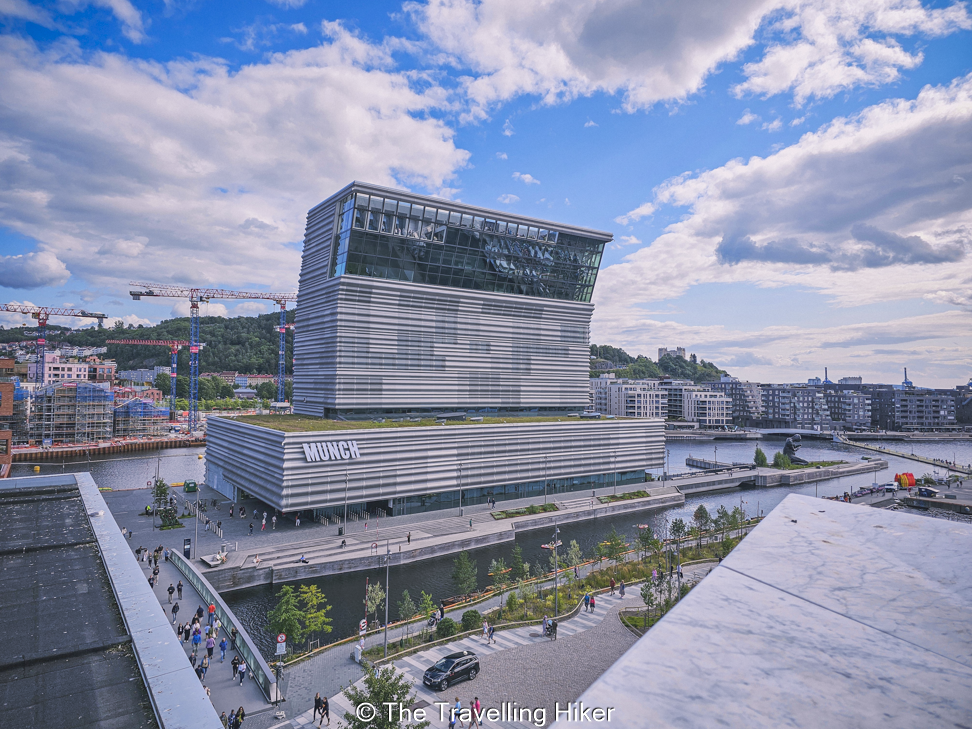
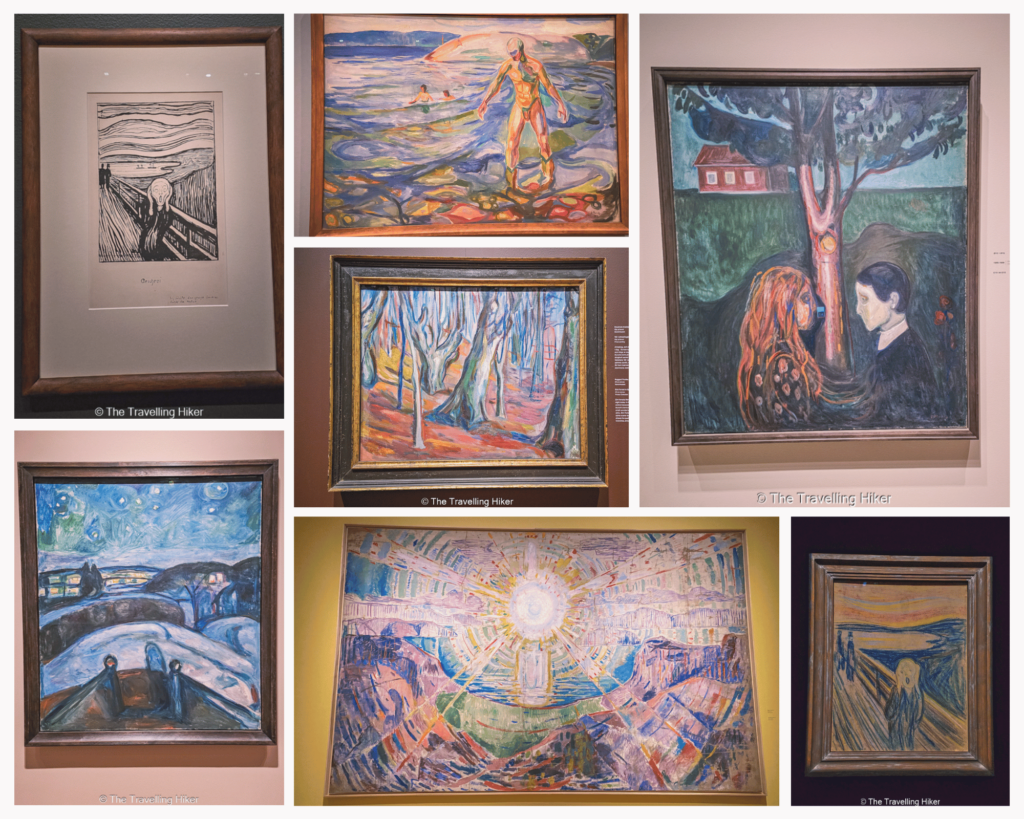
Dinner at Aker Brygge
Aker Brygge was an old shipyard area in the Oslo Harbour that has been rebuilt into a lively area full of restaurants, shops, and cultural center. It was the perfect way to end our visit to Oslo.
OTHER PLACES TO VISIT IN OSLO
If you have some extra time in Oslo or you feel you want to modify my itinerary a little bit, here are some other places you can visit in Norway’s capital.
- Viking Ship Museum: A museum showing 3 viking ships built 1200 years ago that were found in some tombs not too far from Olso. The Viking Ship Museum is going under construction right now and will open again in 2027.
- Fram Museum: Also located in BygdØy peninsula, this is a museum about the Fram ship used by the Norwegians in their expedition to reach the South Pole.
- Kon-Tiki Museum: This museum revolves around the expeditions of Thor Heyerdhal, a Norwegian explorer who crossed the pacific in a small wooden raft named Kon-Tiki.
- Vigeland Museum: Not far from Vigeland Park, you’ll find Vigeland Museum where you’ll be able to learn more about Gustav Vigeland.
- Deichman Library: Deichman library is one of the most modern libraries in the world. It was only constructed and opened to the public in 2020 and its architecture will impress you with the top floors located on a cantilever structure. Its located next to the Opera House.
- Cruise on the Oslo Fjord: If you want to see Oslo from another perspective, then you have to join a cruise along the Oslo fjord.
MOVING AROUND OSLO
Many important sites in Oslo are quite far from one another, so the best way to move around Oslo is by using its public transport. If you have an Oslo Pass, then you are in luck, you have nothing to worry about. The Oslo Pass includes unlimited public transport ride (rides to the Airport are not included).
If, on the other hand, you don’t have an Oslo Pass, then you will have to buy regular tickets but it is not always easy to find a place where to buy them. To help you with this, I recommend downloading the Ruter App (available for both Android and iOS), which allows you to buy public transport tickets with your phone whenever you need them.
A single ticket for an adult is 42 NOK (price in 2024) so depending on how many rides you plan to do, it might be more interesting to get a 24h pass which costs 127 NOK. If you are going to do more than 3 rides, then it is definitely more interesting.
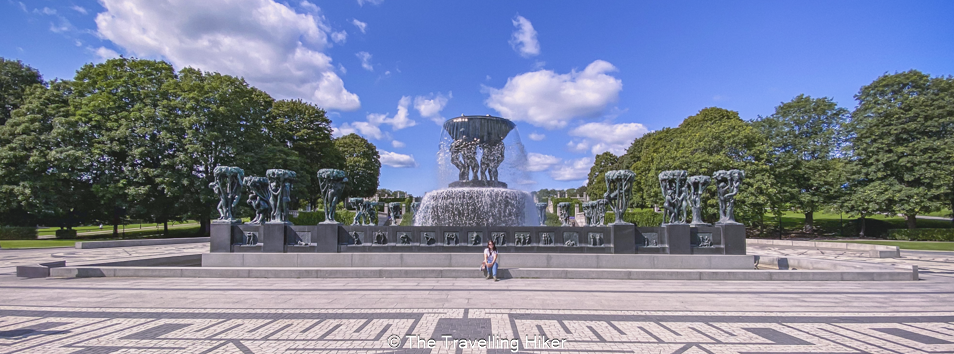
ACCOMMODATION IN OSLO
Let’s be honest, accommodation in Oslo is not cheap. However, if you are not looking for a luxury stay, you can find a few interesting deals. It all depends on which area of Oslo you want to book your accommodation and how much you are willing to pay.
AREA AROUND THE NORWEGIAN PARLIAMENT
The area aroud the Norwegian Parliament until the National Theather is the most exclusive area in Oslo, where all the historical buildings are. Hotels in this area will be on the expensive side but if you’re looking to treat yourself during your visit to Oslo, here are some hotel recommendations.
AREA AROUND THE OPERA HOUSE
This area around the Opera House and the Oslo Central Train Station is in my opinion the best area to book your accommodation in relation to quality-price ratio. Here you’ll find options for all sorts of budgets and it is where we stayed during our visit to the capital of Norway. Here are some hotel recommendation in this area:
- Thon Hotel Spectrum. This is the hotel we stayed at in Oslo. In full honesty, this hotel was absolutely amazing, except for one thing, it is located next to a night club and the isolation of the walls is not the best. However, if this doesn’t bother you, then this hotel was really good. We arrived at 9 am and the let us do an early check-in, they room was super spacious and comfortable, there was unlimited free coffee and drinks at the reception area and the breakfast buffet was absolutely delicious.
- Oslo City Box
AKER BRYGGE AREA
Aker Brygge is the most modern area in Oslo. If you’re looking to stay in a place full of live and things to do, this area is perfect for you. Hotel recommendations in Aker Brygge.
MAP WITH ALL LOCATIONS
Here’s a map with all locations mentioned throughout this blog.
- The sites visited during the first day are pinned in yellow and the sites of the second day are pinned in bright green.
- The sites pinned in blue are additional sites that I didn’t visit but I would add to my itinerary if I had stayed longer in Oslo.
HOW TO USE THIS MAP: Click the star next to the map title to add this map to your google maps account. To view it on your phone while traveling, open Google Maps, click on the menu button and go to “Your Places”, click on Maps and you’ll see this map in your list.
INFOGRAPHIC
No time to read the full blog post? Here’s an infographic I’ve created with the most important information about it.
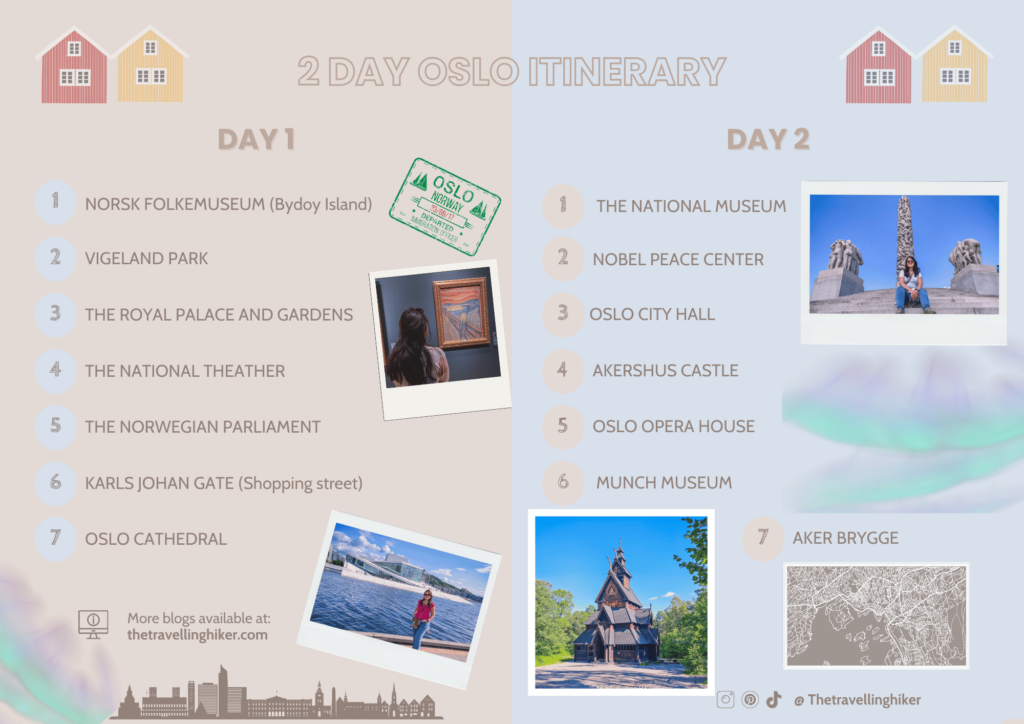
And that’s it for this week’s blog. I hope you liked it and found it useful. Let me know what you think in the comments!
Happy travels!
DISCLAIMER: Did you know? This blog uses affiliate partnerships. When you click and book or make a purchase through one of my blog posts, I may receive a small commission (at no extra cost to you). Thank you for supporting The Travelling Hiker!
OTHER ARTICLES ABOUT NORWAY
- PLAN A TRIP TO LOFOTEN
- 12 DAY LOFOTEN ITINERARY
- REINEBRINGEN, THE MOST FAMOUS VIEW IN LOFOTEN
- ACCOMMODATION IN LOFOTEN
- HELVETESTINDEN AND BUNES BEACH HIKE
- THE BREATHTAKING RYTEN HIKE
- THE 10 BEST HIKES IN LOFOTEN
- VOLANDSTINDEN HIKE
- OFFERSOYKAMMEN HIKE
- OSLO – TWO DAY ITINERARY
- THE 21 BEST THINGS TO DO IN BERGEN
- MANNEN HIKE
- THE 10 BEST THINGS TO DO IN BODO
- HIKING TO HORSEID BEACH
ENJOYED THIS GUIDE? PIN IT FOR LATER!
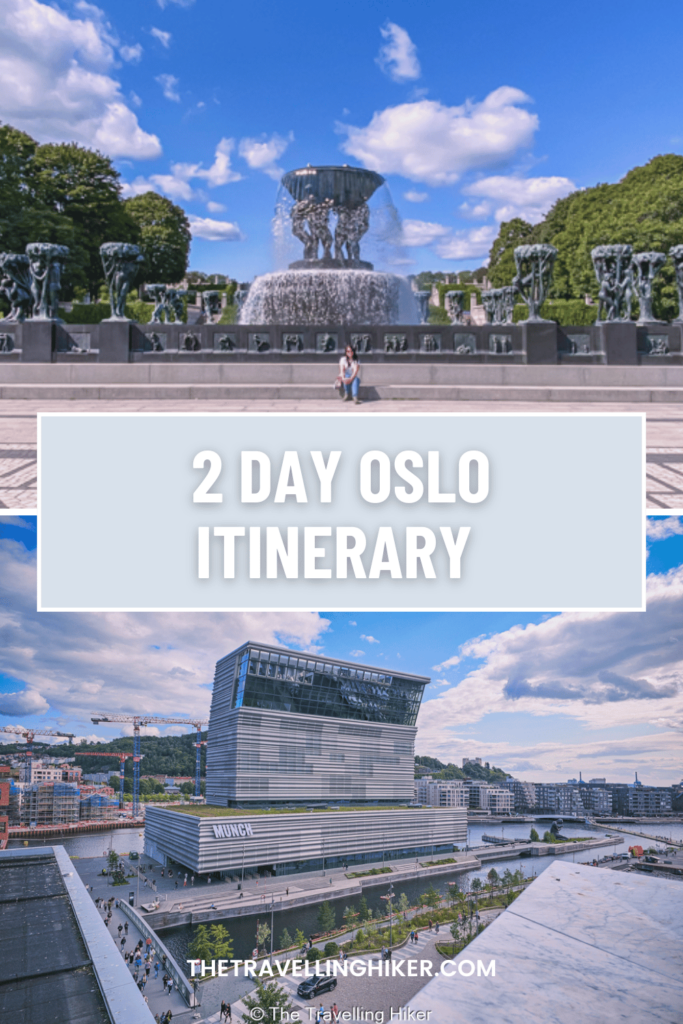
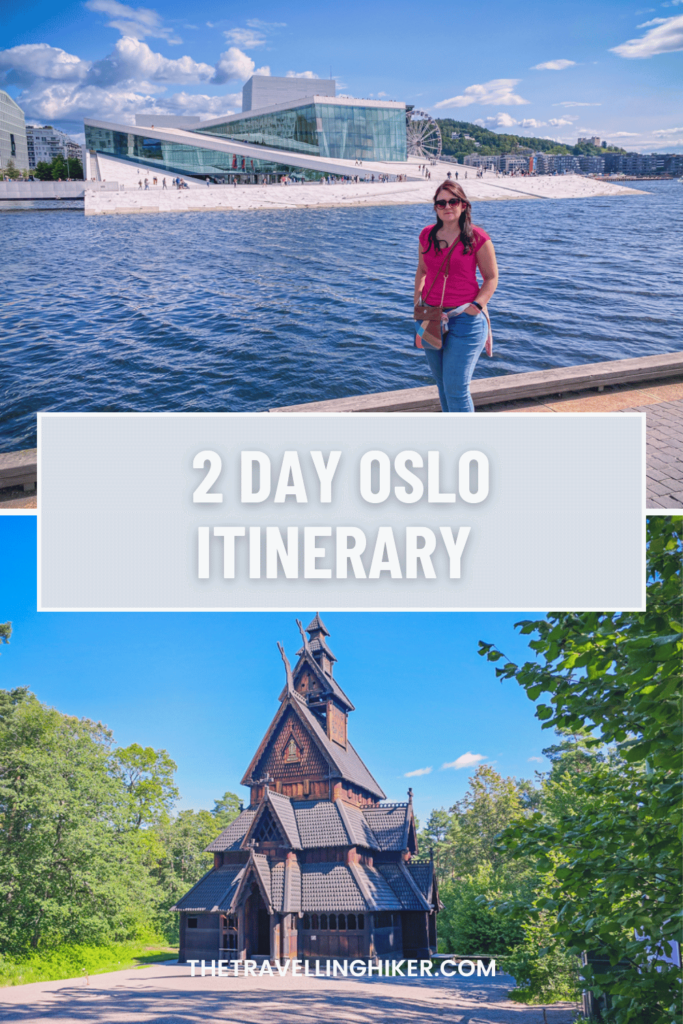

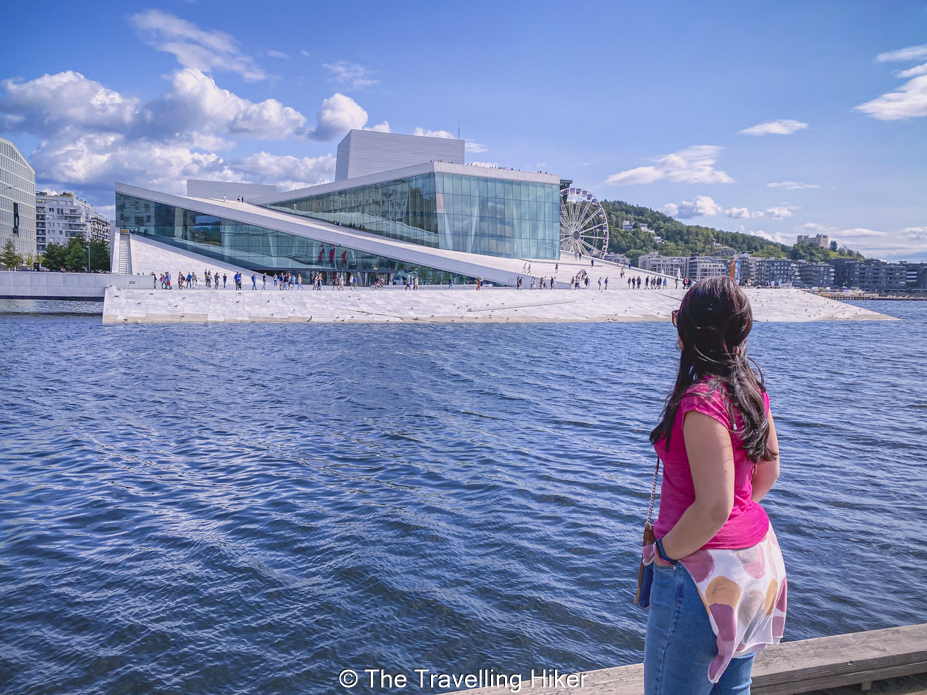
Two days very well spent and useful to spend a weekend